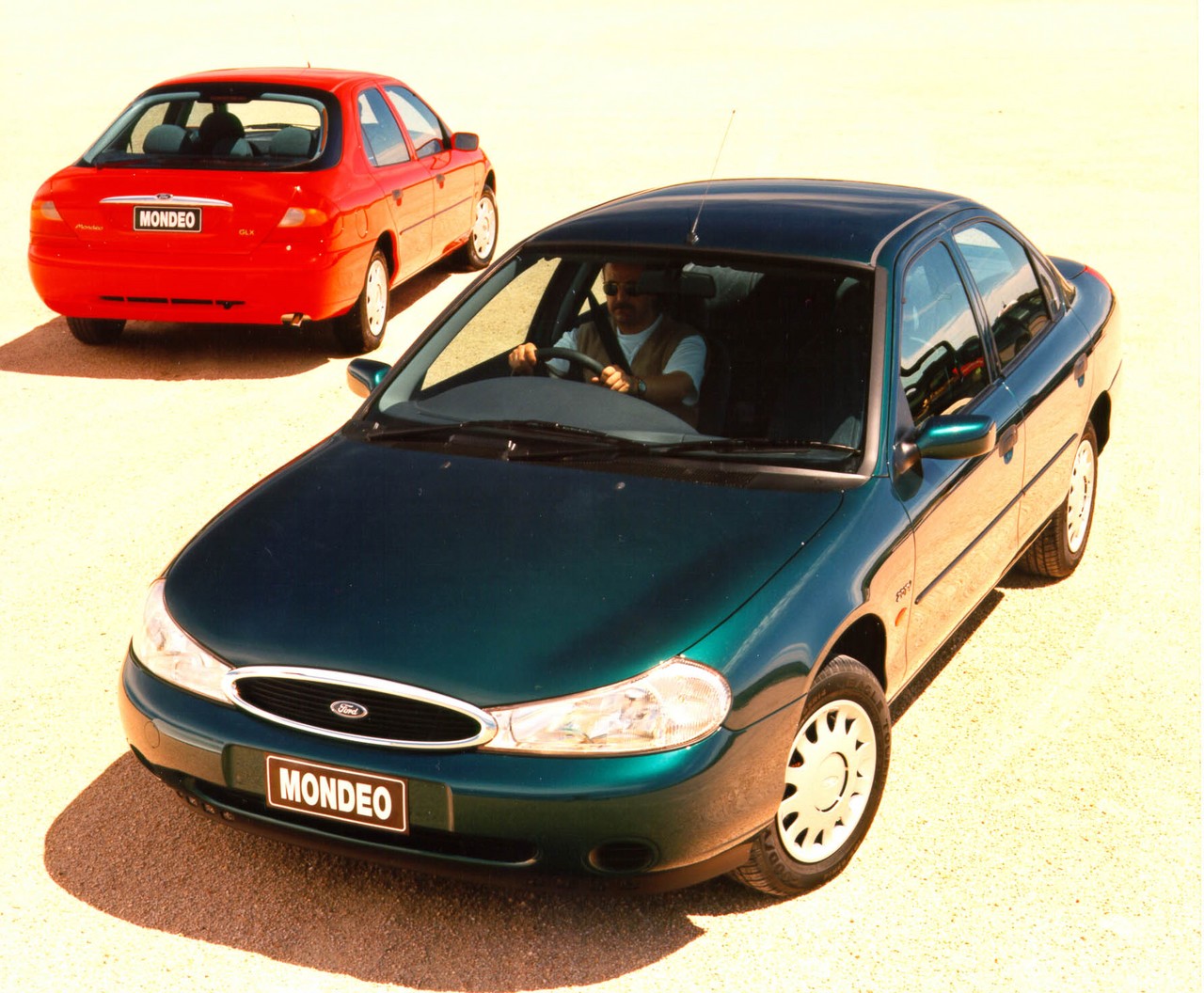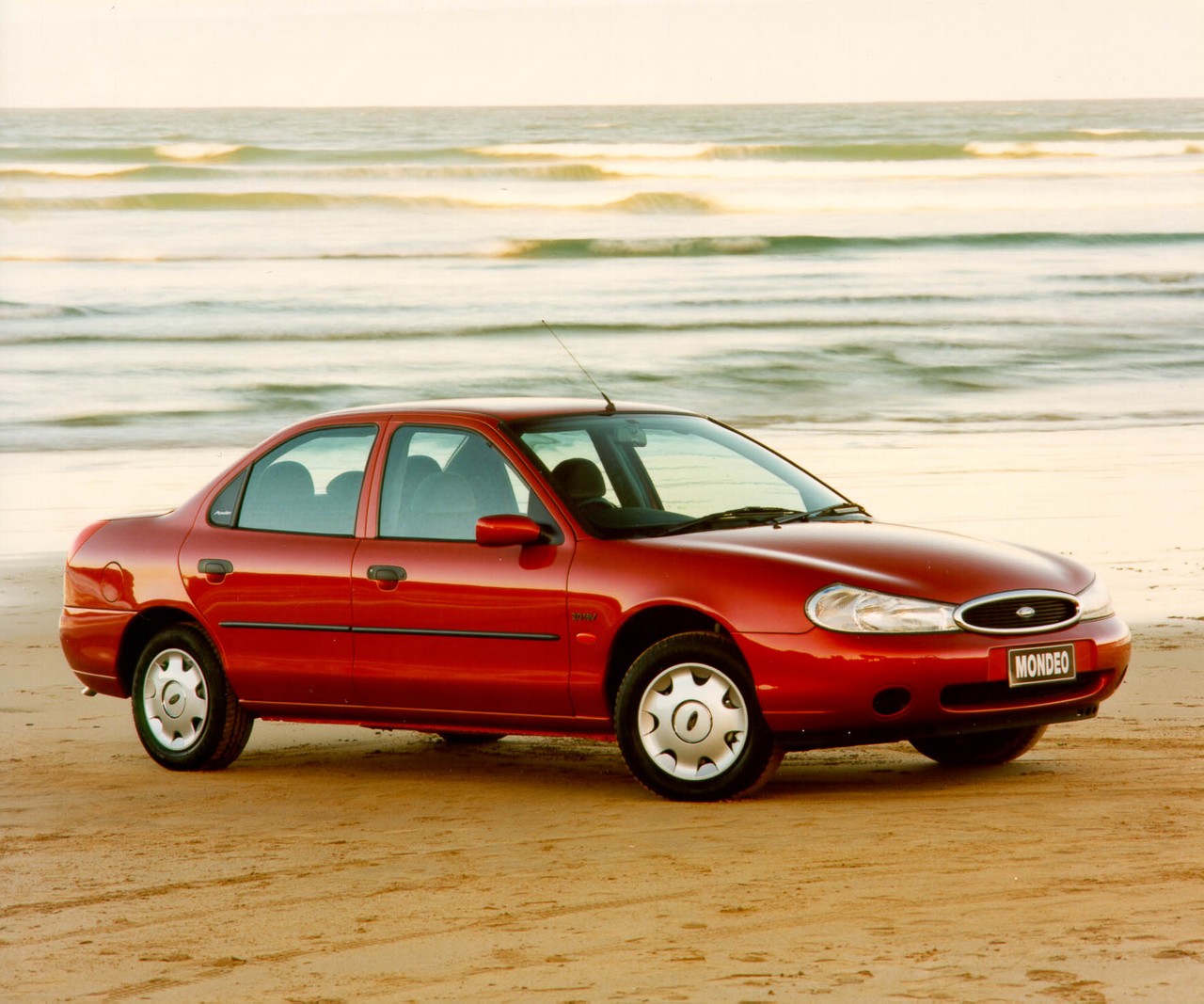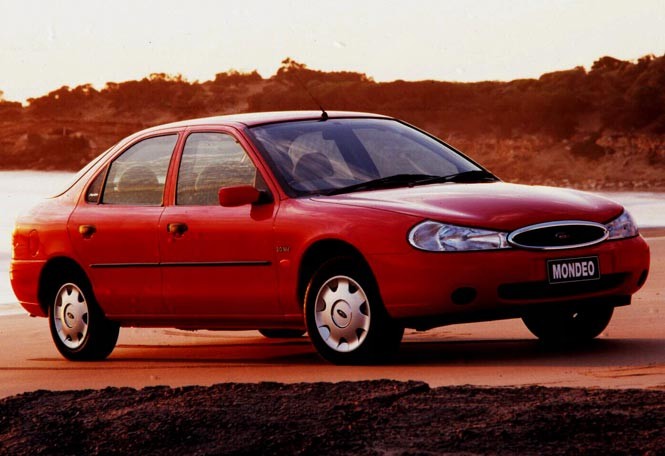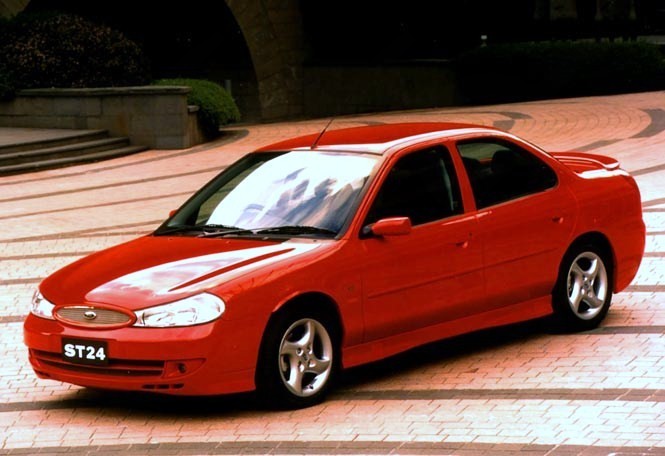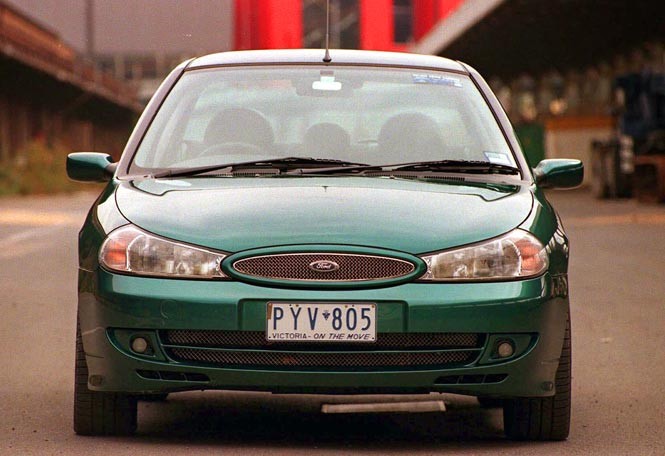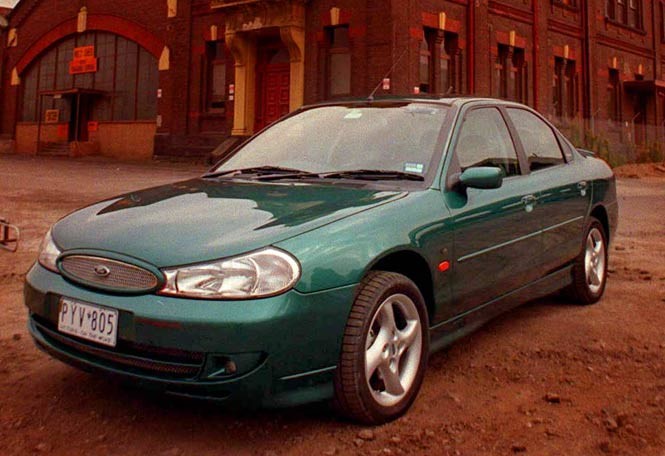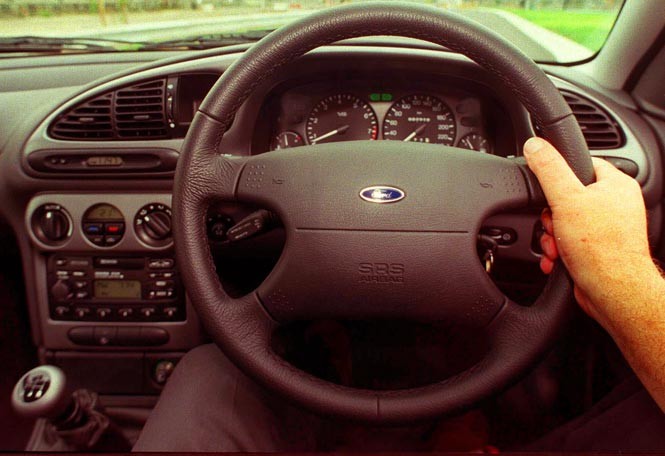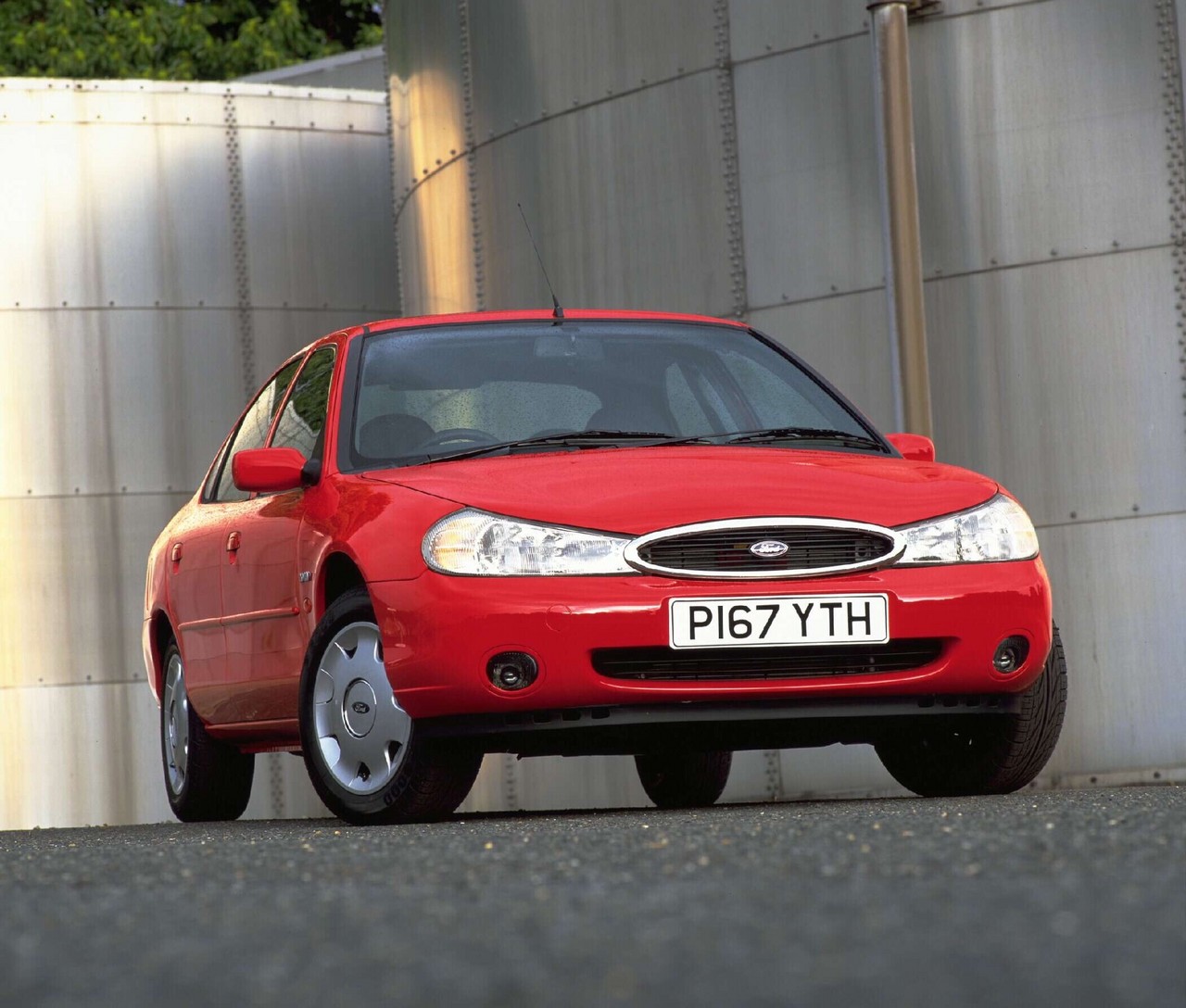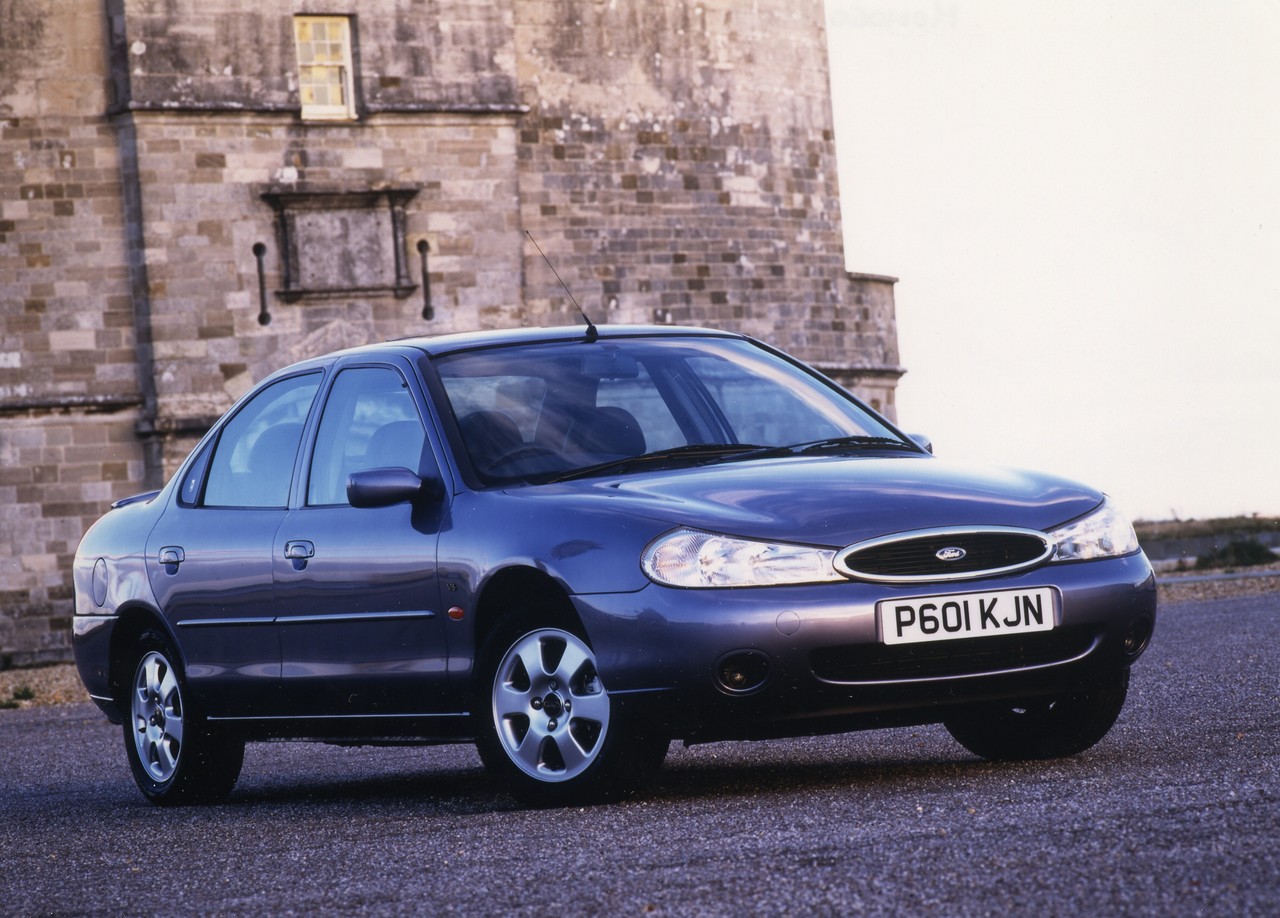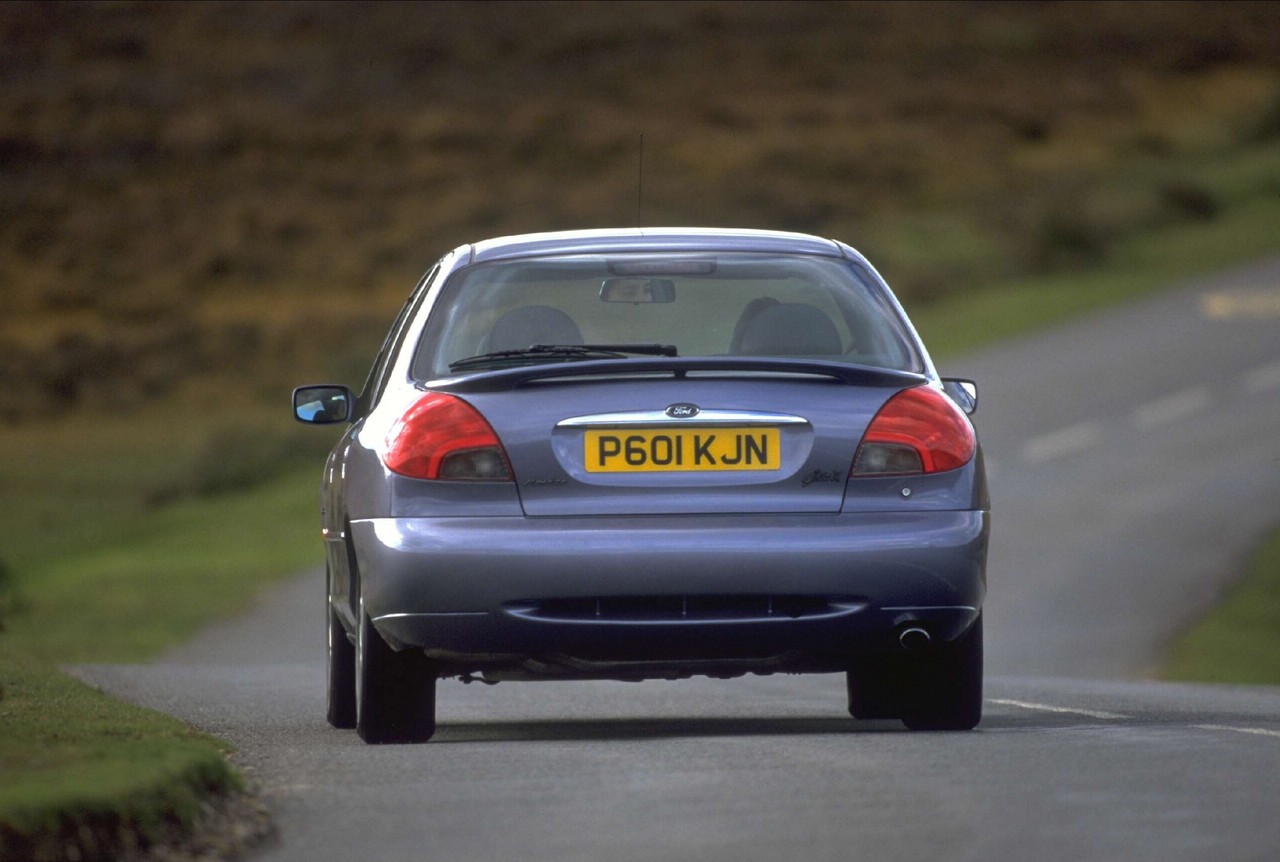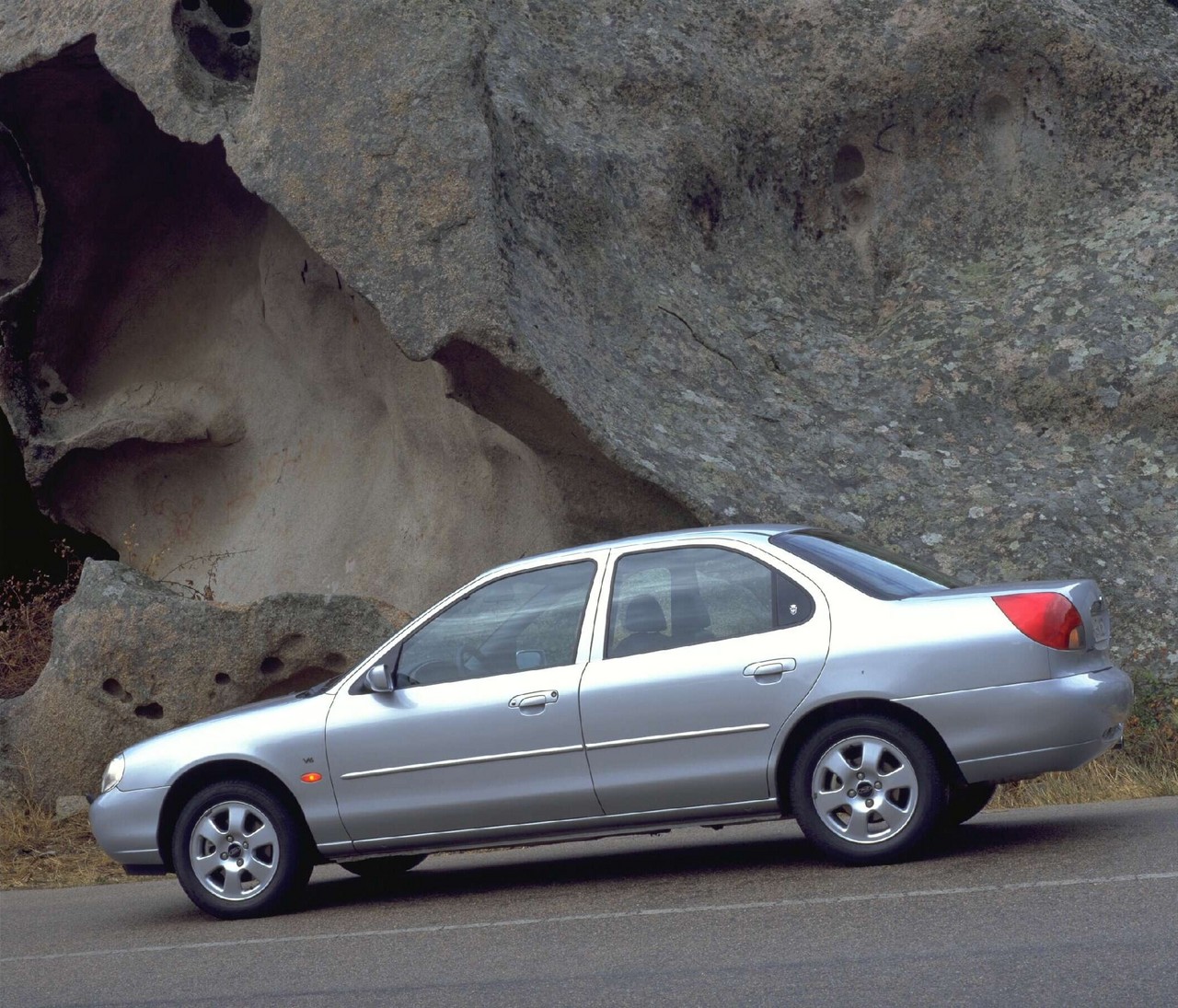
- Fuel-efficient 2.0-litre petrol engine
- Good load space
- Accurate steering
- Engine performance only adequate
- Suspension lacks compliance
- Cabin lacks sound insulation
- Poor standard of interior fit and finish
Review: Ford HC Mondeo (1996-98)
Overview
Released in December 1996, the Ford HC Mondeo was available as a mid-size liftback, sedan or wagon. Manufactured in Belgium, the Mondeo was powered by a 2.0-litre four-cylinder engine with double overhead cams and four valves per cylinder; transmission choices consisted of a four-speed automatic or five-speed manual.
Dimensions and development
Compared to the Mk.1 Mondeo , the Mk.2 Mondeo sedan was 75 mm longer (at 4556 mm), 1 mm wider (1750 mm) and 3 mm taller (1424 mm), though wheelbase length was unchanged at 2704 mm. Relative to the sedan, the Mk.2 Mondeo liftback had the same dimensions, though the wagon was 115 mm longer (at 4671 mm) and had a 39 mm higher roofline (1463 mm).
Relative to its predecessor, the Mk.2 Mondeo had retuned suspension, greater noise insulation and revised styling, including new body panels, wrap-around headlights and an oval-shaped grille.
Suspension
The Mk.2 Mondeo had MacPherson strut front suspension with lower A-arms and separate anti-roll bars attached by drop links directly to the struts. The liftback and sedan models were fitted with Ford’s independent ‘Quadralink’ rear suspension system which incorporated passive rear wheel steering; the wagon, however, had all-independent short and long arm coil spring suspension.
| Body | Variants | Engine | Trans. | Peak power | Peak torque |
|---|---|---|---|---|---|
| Wagon | LX | 2.0-litre petrol I4 | 4sp auto, 5sp man. |
94 kW at 5700 rpm | 170 Nm at 3700 rpm |
| Sedan | LX, GLX |
||||
| Liftback | GLX |
Safety equipment
Standard safety equipment for the HC Mondeo included a driver’s airbag and front seatbelt pretensioners. The Mondeo was also fitted with four-wheel disc brakes, though ABS, a front passenger airbag and side airbags were optional.
Brakes
The Mk.2 Mondeo had 260 mm by 24 mm vented front brake discs and 253 mm by 20 mm vented rear discs.
Euro NCAP crash testing
In Euro NCAP crash testing , a 1997 Mondeo liftback received a three star adult occupant protection rating – with a score of 17 – though the third star was ‘struck out’ as the side impact test result did not meet the standard prescribed for 1998. In the offset crash test, the integrity of the passenger cabin was compromised, chest protection was rated as weak, there was excessive footwell intrusion and dashboard structures posed an injury risk to the driver’s legs. In the side impact test, chest protection was rated as poor.
Features
Standard features for the Mondeo LX included a four speaker sound system with radio and cassette player, air conditioning, 60/40 split and folding rear seats, central locking, power mirrors and a height and reach adjustable steering wheel.
The Mondeo GLX was further equipped with air conditioning, cruise control, powered height adjustment for the driver’s seat, a leather wrapped steering wheel, remote central locking and power windows.
Review: Ford HD Mondeo (1999)
Overview
Released in January 1999, the HD Mondeo introduced a revised range as the wagon body style was discontinued. Standard safety equipment and features were largely unchanged.
| Body | Variants | Engine | Trans. | Peak power | Peak torque |
|---|---|---|---|---|---|
| Sedan | LX, GLX |
2.0-litre petrol I4 | 4sp auto, 5sp man. |
94 kW at 5700 rpm | 170 Nm at 3700 rpm |
| Liftback | GLX |
Review: Ford HE Mondeo (2000)
Overview
Released in February 2000, the HE introduced a revised range as the LX variant was replaced by Verona, the GLX replaced by Ghia and the ST24 – with a more powerful, 2.5-litre V6 petrol engine – was introduced.
Compared to its HD predecessor, the entry-level variant was fitted with bigger, 15-inch wheels with wider tyres for improved road-holding. Mechanically, changes for the 2.0-litre petrol engine included a redesigned right-hand hydraulic engine mount, ladder frame block stiffener, intake and exhaust manifold, injector mountings and throttle body; service intervals were also extended from 10,000km to 15,000km. For the automatic transmission, the final drive ratio was changed from 3.92 to 4.23.
| Body | Variants | Engine | Trans. | Peak power | Peak torque |
|---|---|---|---|---|---|
| Sedan | Verona | 2.0-litre petrol I4 | 4sp auto, 5sp man. |
94 kW at 5700 rpm | 170 Nm at 3700 rpm |
| Liftback | Ghia | ||||
| Sedan | ST24 | 2.5-litre petrol V6 | 5sp man. | 125 kW at 5600 rpm | 220 Nm at 4250 rpm |
Safety equipment
Standard safety equipment for the Verona included a driver’s airbag and front seatbelt pretensioners. The Ghia and ST24 variants were further equipped with a front passenger airbag, front side airbags, ABS and traction control.
Features
Standard features for the Mondeo Verona included a four speaker sound system with radio and cassette player, air conditioning, 60/40 split and folding rear seats, remote central locking, power windows, power mirrors and a height and reach adjustable steering wheel.
The Mondeo Ghia was further equipped with 15-inch alloy wheels, air conditioning, velour trim, powered height adjustment for the driver’s seat, a leather wrapped steering wheel, cruise control, front fog lights, leather-wrapped steering wheel and gear knob, remote central locking, power windows, front footwell lights and trip computer. Visually, the Ghia was also differentiated by its chrome grille and woodgrain interior trim.
The Mondeo ST24 omitted the Ghia’s cruise control and trip computer, but was fitted with 16-inch twelve-spoke alloy wheels with 205/50 ZR16 tyres, sports suspension, contoured front seats, leather seat trim and heated mirrors. Furthermore, the ST24 was fitted with bigger front brake discs, a sports bodykit (including a rear spoiler and side skirts), mesh grille and distinctive front and rear bumper styling.
Related links
